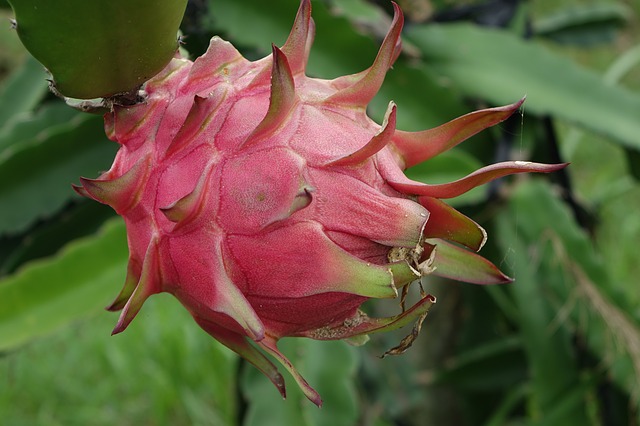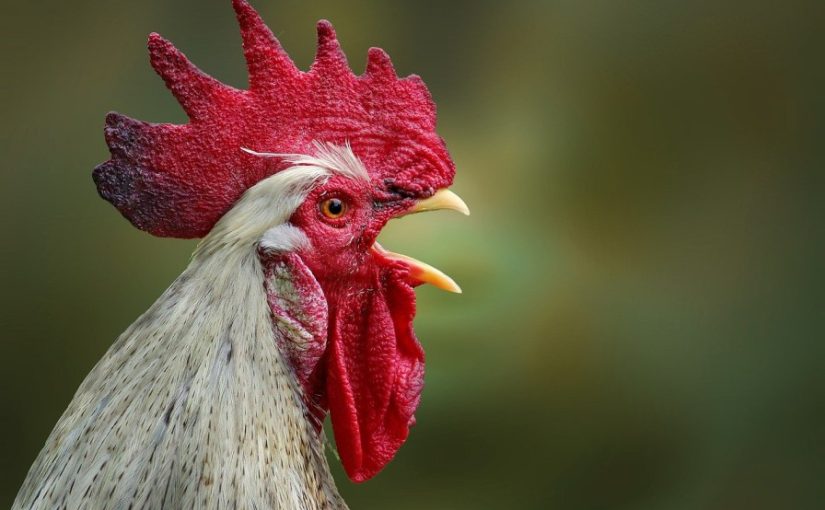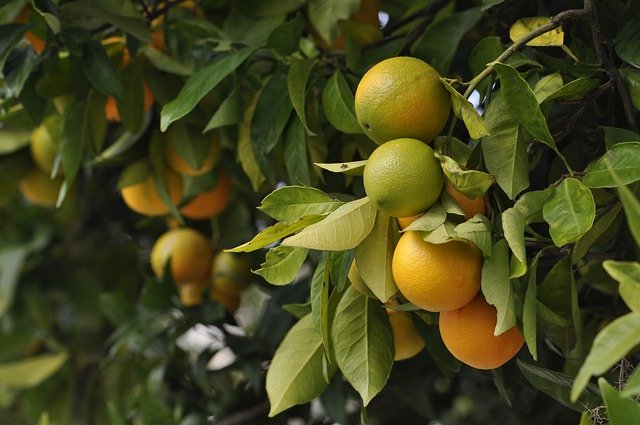Do you know that some of the fruits are healthier than others? Dragon fruit is one of them with plenty of health benefits. Dragon fruit, or pitaya, is a cactus fruit, well known for its peculiar look.
The healthy fruit is loaded with vitamin C, fiber, and antioxidants. This improves the immune system of the human body and is also used for diabetes treatment. The farming dragon fruit is profitable as well as satisfying experience.
Besides, medicine extracted from the flower and stem can be used in treatment to improve blood circulation. Therefore Dragon fruit can be branded as prestigious health food.
Moreover, the flowers of the plant are unique; indeed it is one of the world’s largest flowers. Their size is not the only specialty of dragon fruit. But the flower of the dragon plant just blossoms for one night and the fragrances on this night are beautiful with added tropical fruitiness.
Also Read: Growing Orange with Perfection
The hot summer months are suitable for dragon fruit cultivation. It won’t grow for the rest of the year but grows quickly once it starts growing. The fruit begins to form after the flowering takes place. For around 20 to 30 years, one plant can produce fruit. Thus, your one plant can deliver plenty of ready to eat delicious dragon fruit.
How to Grow Dragon Fruit?
The dragon plant requires little support to grow. As it is a subtropical plant, which needs a great deal of heat and humidity, here is a breakdown what do you need to feed and produce dragon fruit.
Deciding the Place and Soil
Dragon fruits must be cultivated in an open field with a clear exposure to the sun. It is not encouraging the planting of crops in areas with good rainfall. The place must be safe with a strong organic sandy loam soil with sufficient drainage.
Besides, this plant may thrive in any well-drained soil but likes to develop in slightly acidic soil, with a pH range of six to seven. For this plant, sandy soil is the best option.
In one single growing season, the dense fleshy stems can grow up to 4 m and must be accustomed and tied to a single 1.8 m high pole or trellis support. There is one another option of precast concrete poles that are widely used, and between three and four plants on one pole can be mounted.
Farming dragon fruit is done by two methods. First is germinating the seeds and others by using stem cuttings. Let’s have a look.
1. Germinating Dragon Fruit Seeds
Growing dragon fruit plants from seeds depend on the same process as other plants. It involves preparing the soil with a well-mixed with potting mix. Then mix the seeds into the soil gently.
The soil needs the proper moisture with a cover over it with some plastic sheet. These seeds may take up to a month to germinate.
But there is an advantage to this method. The seedling grows slowly and cannot be propagated efficiently.
2. Using the Mature Stem
But it is ideal to use safe mature stem parts that have a length between three to six inches.
Once the cutting has been sliced into three to six inches. Make a slanted cut at the base of the stem and add a fungicide at the ends and put it in a shaded area for about 5-7 days before being placed on the field directly.
This is not necessary. But it does promote growth. When you dry or cure the stems, normally two to five days. You will get to know that when the cutting tips turn white, it’s ready to plant.
Besides, these cuttings can be obtained from the commercial nurseries as well as from pitaya growers.
Next, you should plant the cutting in the field, they have to be about 2 inches into the soil and the cut must be positioned in the same direction as the parent plant. Water the plant every day unless the weather stays warm otherwise skips a day.
Finally, you’re going to begin to see roots. You will soon see new growth if the growth is successful. It takes normally about 3 and 4 weeks. This young cutting will produce the fruit of its own in a few years.
At this stage of dragon fruit farming, it is necessary to focus on these few points:
- Fertilizer – Give it fertilizer per month during the active growing season to ensure that the dragon fruit grows well. You’ll want to stop feeding your plant for a couple of months in the cold winter months.
- Water – Since this plant is a cactus plant, it is important to ensure that it is properly watered. Water only the plant when the top of the field is dry and don’t let the plant rest in water. The soil must be wet, not drenched.
- Light – The plant base can see a little shade, but the plant tips require full sun to ensure the plant blooms correctly. When the plant gets too much water, the fruit doesn’t perform well.
- Temperature – Dragon fruit does not thrive in cold weather, so make sure the temperature is higher than 40 degrees Fahrenheit. The temperature needs to vary from 65 to 80 degrees Fahrenheit for optimal growth.
Dragon Fruit Pollination
The proper pollination of dragon fruit is done by the Moths, bats, and bees. But some varieties do not self fertilize at all.
In this case, the pollination techniques come into play. This technique requires the collection of the pollen from two dragon fruits. Using cotton swab softly to mark it with cross-pollinate on the stigma of the opposite herb.
This requires to be done at night, so the time between eight at night and eight in the morning is the best.
In the case of pollinating various plants, it is recommended to use a new cotton swab for each one of these.
After this process, it will take about a month for the fruit to grow.
The fruit has a direct threat from animals such as animals, birds, and monkeys, and of course, they love the dragon fruit.
Some growers use the shade net to shield maturing fruit from damage caused by the birds and hail.
In Dragon Fruit Farming, the emphasis should always be on pesticides and disease control.
Pests include mites, thrips, bees, spiders, mealy bugs, slugs, nematodes, fruit flies, and mice. The birds are the most commonly reported.
Though, the diseases of dragon fruits contain stem purple, anthracnose and fungal pathogens such as fusarium.
Identification of Ripeness of Dragon fruit
When it’s not mature, dragon fruit is green. Once, the fruit starts to mature. The exterior of the fruit shifts to red or yellow depending on the size.
Once the wings of the dragon tend to dry, to grow brown and fade. It signifies that fruit has been starting to mature and ready to eat. In case the wings are still bright. It shows that the fruit is underweight and will take more time to mature.
Once, the dragon fruit attains the stage of maturity. It can press just by a delicate touch of the thumb or fingertips on the surface. The fruit is presumably overripe if it is too pulpy. On the other hand, it’ll take several days to mature if your touch feels solid.
The rugged handling and shipping malfunctions can cause the dragon fruit a damaged skin. For instance, if the fruit is not adequately wrapped during shipping, they may hit each other.
These may even be broken if they dropped.
When the fruit is damaged, the flaws are visible and often smaller this is because of the lack of moisture.
Considering these few points is beneficial for the daily harvesting of dragon fruit.
- Dragon fruits do not grow after harvesting as many other fruits and it is recommended that they should be picked once mature completely.
- The fruit is at its mature stage for processing once the color shifts from green to reddish.
- If the fruit matures, the tiny leaves on the fruit side may often tend to appear gray.
- Once the color of the fruit shifts, it is the right time to pluck the fruit. However, it is necessary to harvest a day after the color changes if the fruit is exported.
- When a dragon fruit is ripe and ready for harvest, it can quickly twist away from the plant. When you ever pull the fruit so fast, it definitely would not be harvested
Conclusion
Besides the health benefits of dragon fruit, it has such a delicious taste once it matures perfectly. It is the right ingredient for a yummy smoothie and is often mixed with the lychee smoothie.
These fruits that contain the red or pink, leathery skin is tasted by the spooning out otherwise it is eaten in pieces. It is possible to process fruits into juice, ice cream or wine. The beautiful flowers, only blowing at night, are applied for the aromatherapy.
Must Read: Custard Apple Farming




